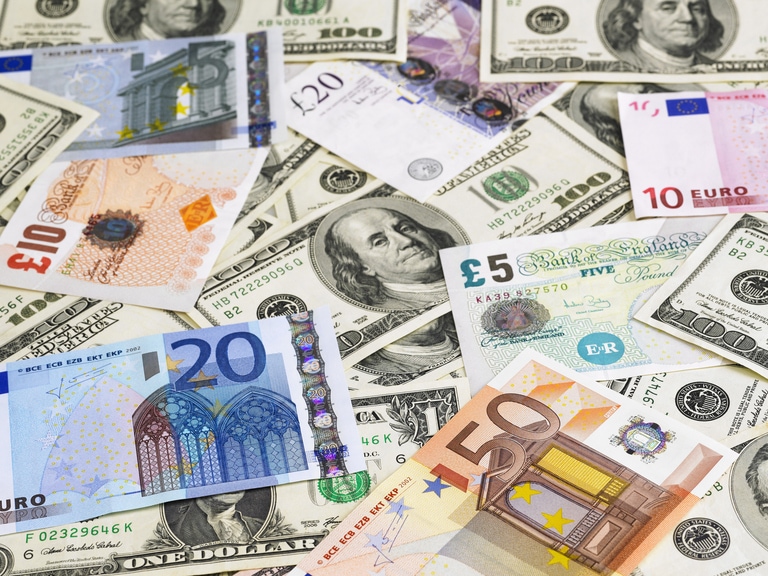While US markets finished the week on a high, after another bumper jobs report and a positive week across the board, markets in Europe, while finishing the week on a high, struggled to match the exuberance of investors on the other side of the Atlantic.
The Nasdaq 100 once again led the way, finishing higher for the sixth week in a row, while the S&P500 closed at its highest levels since August last year. European markets on the other hand, while finishing the week strongly higher, had a more mixed weekly performance.
The reason was a jobs report that painted a picture of a resilient US economy that continues to add jobs at a solid pace, as for the 14th month in a row the number of jobs added comfortably beat economic forecasts. 339k new jobs were added in May, with a 92k upward revision to the previous 2 months, although the unemployment rate ticked up to 3.7%, a number that wasn’t matched by an uptick in the participation rate. Wage growth slowed modestly to 4.3% but not by enough to suggest that the labour market is loosening. Every labour market data item the market was exposed to last week showed that US businesses are still hiring, and vacancy rates are showing little sign of slowing.
This in turn presents the Federal Reserve with a problem, having so clearly suggested they might pause or skip a rate hike at this month’s meeting, a lot of the economic data suggests that rate hikes thus far have had little effect. US 2-year yields reacted accordingly, closing almost 16bps higher on the day, even though they still finished the week lower.
With the latest US inflation numbers due out the day before next week’s Fed meeting, US policymakers will have a challenging job to spin the idea of holding rates while at the same time keeping the option open for a July rate move. It may well be easier to hike in June and leave one’s options open for July. The messaging would undoubtedly be simpler, however the splits on the FOMC are already showing and there are differences of opinion starting to emerge on what comes next.
2-year rates did finish last week down from their peaks of the previous week, however the way they closed off their lows suggest that bond markets remain unconvinced that they will come down quicker than the rate at which they have risen over the past few weeks.
The US dollar also finished the day higher on Friday in anticipation that rates would stay higher for longer, albeit modestly lower on the week.
What was clear from last week’s economic data was the dire state of the manufacturing sector globally, stuck permanently in contraction with little prospect of a rebound in the short term.
The services sector on the other hand has been much more buoyant, a fact that should be borne out by today’s services PMIs from Spain, Italy, France Germany, the UK and US, and which are expected to show resilience to the tune of 57, 57, 52.8, 57.8, 55.1 and 55.1 respectively, all performing strongly despite higher costs, although all are expected to be weaker than their April numbers.
If anything, Friday’s jobs report had something for the bulls and the bears, and while European markets underperformed last week, there is a feeling that central banks are quite close to the end game when it comes to rate hikes, and that while rates shot up at the end of last week, they are holding below their recent peaks.
Inflation does appear to be coming down on the headline level, as are producer prices at a faster rate and these tend to be leading indicators, even with core prices being sticky. That would suggest that core prices will come down, albeit at a much slower rate than originally thought.
Today’s EU PPI numbers for April ought to add further insight into that trend, with an expectation that on a month-on-month basis we could see the -1.6% decline in March accelerate in April to a -3.1% fall.
With China PPI also in negative territory to the tune of -3.6% year on year for the same month, the global economy could be about to undergo a wider wave of disinflation.
The wider question is whether the Saudi’s attempts to underpin the oil price with further production cuts, which were announced over the weekend, make the current situation worse and push Brent crude prices back above $80 a barrel at a time when consumer sentiment remains incredibly fragile.
More question marks remain over the Chinese economy after whispers last week that the authorities there were looking at measures to support its property market, which saw a rebound in metals prices.
EUR/USD – the failure at the 1.0780 area has seen the euro slip back, with support back at the recent lows at 1.0635. We need to see a break of this range with broader resistance at the 1.0820/30 level.
GBP/USD – slipped back from the 1.2540 area last week, but remains in a broader uptrend with support at the 1.2300 area and trend line resistance from the 2021 highs at 1.2630. This, along with the May highs at 1.2680 is a key barrier for a move towards the 1.3000 area.
EUR/GBP – found support at the 0.8560 level last week, just above the December 2022 lows at 0.8558. A break of 0.8550 targets 0.8480. The 0.8620 area now becomes resistance with major resistance behind that at the 0.8720 area.
USD/JPY – last week’s decline from the 140.95 area found support at the 138.40 area, and rallied back to the 140.00 level. While above the 137.00 area the risk remains for a move towards 142.50.






